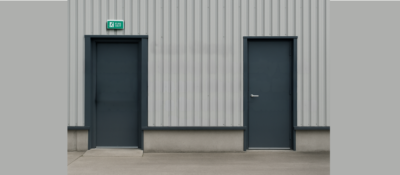At Security Direct, we understand that safety is a paramount concern for our customers when it comes to installing roller shutters and industrial doors. One crucial aspect of this safety is fall back protection. This blog post aims to explain the importance of fall back protection, its legal background, and how it ensures the safety of both property and people.
Fall back protection refers to the mechanisms and features integrated into roller shutters and industrial doors to prevent them from falling uncontrollably in the event of a failure. Such failures can be dramatic and violent, often resulting in severe injury or even fatality if a person is underneath the door at the time of the incident. Therefore, it is essential to have robust fall back protection systems in place.
While there is no specific legal mandate for a particular safety device on vertically acting doors, various health and safety laws and standards emphasise the necessity to prevent fall-back incidents. Here is a timeline of significant legal and standard developments related to fall back protection:
Various components are involved in holding a vertically acting door open. These include:
The required performance for fall back protection is that when a wearing component fails, the door must either have a static weight of less than 20kg or be prevented from dropping more than 300mm and from further use until the component is replaced.
Assessing the safety of a door or shutter can be complex. Unbalanced shutters weighing over 20kg need a safety brake or internally protected direct drive. For other spring-balanced doors, a thorough assessment is necessary. Sections 2.2.4 to 2.2.6 of the DHF TS 013-1:2021 provide guidance for maintainers on this assessment.
It's important to note that regular inspection for insurance purposes does not replace the need for proper fall back protection. Random failures of components like springs, cables, and chains necessitate built-in protection to prevent accidents between inspections.
Fall back protection is a critical safety feature for roller shutters and industrial doors. At Security Direct, we ensure that our products comply with the latest safety standards and legal requirements to provide you with peace of mind. Regular maintenance and adherence to standards like EN 12604 and EN 12453 are essential to preventing potentially fatal incidents and ensuring the long-term safety of your premises.
For more detailed guidance on fall back protection and compliance, feel free to contact us or refer to DHF TS 013-3 Guidance for owners and managers.

Discover how Security Direct supplied and installed a full suite of steel doors and steel fire exit ...

Discover the differences between steel doors, metal fire doors, fire exit doors, and external securi...

A growing technology firm approached Security Direct after expanding into a new open-plan office spa...